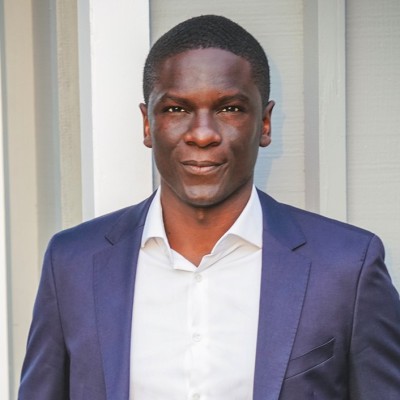Content Library
Below, you'll find archives of previous Venwise Round Table recordings, Member-led interviews and accompanying notes.
Managing Conflict Among your Exec Team: Executive Cohesion Part III with Dana Campbell, Venwise pod leader and CEO at Optimize Corps
Executive team
Dana Campbell, Venwise pod leader and CEO at Optimize Corps, leads a roundtable on managing conflict among executive teams. She shares key reasons teams struggle with conflict, introduces practical tools for healthy dialogue, and answers audience questions on decision-making, team dynamics, and resolving executive impasses.

Executive team
- Understand the Nature of Conflict: Recognize the different types of conflicts that can occur within an executive team, from lack of productive conflict to excessive unproductive conflict that hinders decision-making.
- Frameworks for Conflict Resolution: Utilize frameworks and shared language to address and resolve conflicts effectively, which helps in establishing a common understanding and approach among team members.
- Cultural Beliefs about Conflict: Address and understand the cultural and personal beliefs within the team about conflict, which can significantly impact how conflict is managed and resolved.
- Role of Team Beliefs and Safety: Evaluate how team norms and the overall safety felt by team members can either support or hinder the ability to engage in healthy conflict.
- Importance of Role Clarity: Ensure clear role definitions within the team to prevent conflicts that arise from ambiguity in responsibilities and decision-making authority.
- Creating Space for Difficult Conversations: Allocate sufficient time and space in team meetings to address and resolve conflicts without rushing, which is crucial for thorough and thoughtful resolution.
- Leadership Modeling: Highlight how leadership behaviors, especially around vulnerability and openness to different viewpoints, set the tone for how conflict is handled within the team.
- Tools for Conflict Management: Introduce practical tools like "above and below the line" thinking to help team members identify their stance in a conflict and adjust their approach accordingly.
- Building a Culture of Healthy Debate: Foster an environment where healthy debate and conflict are seen as essential for the growth and resilience of the team.
- Impact of Conflict on Team Dynamics: Recognize the impact of unresolved or poorly managed conflict on team dynamics and overall company health.

Using OKRs in a Changing Environment with Zachary Ross, Founder and President at OKR Workshop Consulting
OKRs,Goals
Zachary Ross, Founder and President at OKR Workshop Consulting, leads a deep dive into OKRs—covering best practices, common challenges, reporting cadences, and the difference between OKRs, KPIs, and metrics. The session features real-life cases, interactive Q&A, and practical tips for aligning teams and driving strategy execution.

OKRs,Goals
- OKRs as a Critical Thinking Framework: OKRs (Objectives and Key Results) are not just a goal-setting tool but a critical thinking framework that helps align efforts across an organization, emphasizing regular questioning and reassessment of priorities.
- Adaptability to Change: In a changing environment, it's essential for OKRs to be flexible. Organizations must be willing to adjust OKRs as needed throughout their cycle to respond to new information or changes in the business landscape.
- Ongoing Discipline Required: Implementing OKRs requires ongoing discipline, not just setting them at the beginning of the year but regularly reviewing and adjusting them to drive continuous improvement and relevance.
- Employee Involvement: Encourage employees across the organization to contribute to the OKR process, which helps in fostering a sense of ownership and alignment with the organizational goals.
- Balancing Top-Down and Bottom-Up Approaches: Effective OKR strategies balance top-down leadership guidance with bottom-up input from employees to ensure comprehensive coverage of goals that reflect both leadership vision and practical, on-the-ground insights.
- Regular Check-Ins and Adjustments: Regular OKR reviews (monthly or quarterly) are crucial for keeping the organization on track and making timely adjustments. This prevents drifting away from core objectives due to market or internal changes.
- Retrospectives for Learning: Conduct retrospectives at the end of each OKR cycle to learn from the outcomes. Discuss what worked, what didn’t, and how to improve the process for future cycles.
- Clear Communication of OKRs: Clear communication of OKRs throughout the organization is vital for ensuring that everyone understands and aligns with these goals, reducing confusion and misalignment.
- Use of OKRs for Cross-Functional Alignment: Use OKRs to improve cross-functional alignment, helping teams understand their interdependencies and collaborate more effectively towards common goals.
- Training and Support: Provide adequate training and support for teams to understand and effectively implement OKRs, emphasizing their strategic importance beyond mere task completion.

Cultivating a Performance Culture Through compensation: A Finance + People Case Study with Olivia Bumb and Ryan Hoffman, VP of People and CFO at Polly
Performance,Culture,Compensation
Olivia Bumb (VP of People) and Ryan Hoffman (CFO) at Polly share their case study on building a performance-driven compensation culture. They discuss implementing leveling frameworks, pay equity, OKR-driven performance management, and lessons learned from aligning people and finance teams on compensation strategy. Audience Q&A covers internal equity, communication, and practical challenges.

Performance,Culture,Compensation
- Pre and Post-Leveling Overview: Before implementing their compensation leveling project, compensation at Polly was inconsistent, lacking a structured approach. The changes led to a more equitable and performance-driven compensation model.
- Importance of Collaboration: The project was a collaborative effort between the finance and people teams, emphasizing the importance of partnership in such initiatives.
- Establishing Clear Objectives: Defining clear objectives at the beginning of the compensation review process was crucial for guiding the project and achieving desired outcomes.
- Stakeholder Engagement: Gaining buy-in from key stakeholders, including the executive team and the board, was vital for the project's success.
- Data-Driven Decision Making: Relying on comprehensive market data and benchmarks helped ensure the compensation adjustments were competitive and aligned with industry standards.
- Transparent Communication: Effective communication about compensation changes to the entire company was essential for maintaining trust and clarity.
- Iterative Process and Continuous Feedback: The compensation system was treated as an iterative process, with ongoing adjustments based on employee feedback and evolving company needs.
- Impact of Compensation on Performance Culture: The case study demonstrated how thoughtfully designed compensation strategies could drive a performance-oriented culture, rewarding high performers while aligning everyone's goals with the company's strategic objectives.

Executive Cohesion Part II: Aligning on Shared Purpose with Matt Shenker, Co-founder and COO at Mattermore
Executive team,Alignment
Matt Shenker, Co-founder and COO at Mattermore, leads a Venwise roundtable on aligning executive teams around shared purpose. He breaks down cohesion into purpose, trust, and structure, and shares practical tools for culture audits, maintaining alignment, and connecting personal values to work. The session includes actionable advice for leaders navigating team transitions and building trust.

Executive team,Alignment
Here are the key takeaways from "Executive Cohesion Part II: Aligning on Shared Purpose with Matt Shenker, Co-founder and COO at Mattermore":
- Three Pillars of Cohesion: Cohesion is built on three key pillars: purpose, trust, and structure. Each element plays a critical role in ensuring that teams are aligned and work effectively towards common goals.
- Importance of Purpose: Purpose acts as a guiding light, providing direction and motivation. Without a clear purpose, teams may lack focus and cohesion, leading to disjointed efforts and reduced effectiveness.
- Trust as a Foundation: Trust is essential for building strong relationships within teams. It facilitates open communication and enables team members to rely on each other in achieving shared objectives.
- Structured Approach to Work: Effective structures in work processes ensure that team members have clear roles and responsibilities, which helps in managing workload and reducing stress.
- Culture Audit Tools: Utilizing tools for conducting a culture audit can help identify how well a team’s personal values align with their work, ensuring that the organizational culture supports its strategic goals.
- Dopamine and Motivation: Understanding the role of dopamine in motivation can help leaders create environments that keep team members engaged and focused on their goals. Dopamine is triggered by the anticipation of rewards, not just the rewards themselves.
- Value-Driven Performance: Encouraging employees to align their personal values with their work enhances motivation and satisfaction, leading to better performance and fulfillment at work.
- Continuous Dialogue: Maintaining an ongoing dialogue about values, purpose, and individual and team goals is crucial. This continuous engagement helps in keeping the team aligned and motivated.
- Feedback and Adaptation: Regular feedback sessions and the willingness to adapt based on that feedback are essential for maintaining alignment and cohesion within the team.
- Leadership’s Role in Cultivating Purpose: Leaders play a critical role in articulating and embodying the organization's purpose, thereby setting the tone for the entire team.

AI Spotlight with Joe Brown, CEO of DearDoc
AI
Joe Brown, CEO of DearDoc, shares how his team built and launched three AI products in three months, leveraged AI to boost sales, and cut $50K/month in costs using OpenAI. He details practical steps, minimal dev hours, and how AI transformed sales training and content creation, offering actionable insights for B2B SaaS leaders.

AI
- Rapid Product Development: Developed and launched three AI-driven products in three months, showcasing agility and innovation in product development.
- AI Integration in Sales: Leveraged AI to enhance sales team performance, enabling them to close more deals effectively by automating and personalizing sales interactions.
- Cost Reduction: Achieved significant monthly cost savings ($50,000) by implementing AI solutions, particularly in automating processes that previously required more human resources.
- Practical AI Applications: Demonstrated practical applications of AI in everyday business processes, particularly in automating responses and engaging potential clients, which can be replicated across industries.
- Minimal Development Effort: Highlighted the ability to implement these AI solutions with minimal development hours and low expenditure, making it accessible for businesses of various sizes.
- Employee Training and AI: Emphasized the importance of training employees, especially the sales team, to use AI tools effectively to enhance their productivity and sales capabilities.
- Future-Proofing Business: Discussed the necessity of continuous innovation and adaptation to maintain competitive advantage and respond to changing market demands with AI technologies.

Planning Offsites for your Engineering, Product, and Design Teams with Allison McMillan, Engineering Leader.
Offsite,Engineering,Product team,Org design
Allison McMillan, engineering leadership consultant, leads a practical roundtable on planning effective offsites for engineering, product, and design teams. She covers what makes EPD offsites unique, sample agendas (including virtual options), recommended activities, and tips for engagement and communication. Attendees leave with actionable steps for their next offsite.

Offsite,Engineering,Product team,Org design
- Unique Considerations for EPD Offsites: EPD (Engineering, Product, and Design) offsites have distinct needs compared to other types of offsites, focusing more on technical alignment, collaboration, and cross-functional understanding.
- Importance of Specific Agendas: Detailed, goal-oriented agendas tailored to the needs of EPD teams are crucial. These should include a mix of strategic discussions, technical reviews, and team-building activities.
- Inclusion of Remote Elements: Given the hybrid and remote nature of many EPD teams, incorporating virtual elements or completely virtual offsites can be effective, especially when geographical or budget constraints exist.
- Facilitating Effective Communication: Offsites should include sessions designed to enhance communication among team members, particularly given the variety of communication styles, including neurodiversity within teams.
- Use of Structured Activities: Structured activities, such as workshops or creative problem-solving sessions, can significantly enhance the effectiveness of the offsite by ensuring engagement and productive use of time.
- Addressing Anxiety and Comfort: Plan offsites with an understanding of the potential anxiety they can cause, particularly among introverted or neurodivergent team members, and strive to create a comfortable and inclusive environment.
- Sample Agendas and Activities: Providing sample agendas with clear objectives for each session helps in planning and executing successful offsites. Activities should be chosen to meet specific goals, whether they are alignment, brainstorming, or team bonding.
- Balancing Technical and Non-Technical Sessions: While technical discussions are essential, non-technical sessions that focus on team dynamics, communication, and personal connections are equally important for holistic team development.
- Dynamic and Flexible Planning: Be prepared to adapt the offsite agenda based on team feedback and the effectiveness of planned activities. Flexibility is key to addressing the team's needs in real-time.
- Post-Offsite Follow-Up: Ensure that the insights and decisions from the offsite are documented, followed up on, and integrated into the team’s regular workflows to maximize the benefits of the time spent.

Building a Copilot Case Study with Jack Arenas, Co-Founder and CEO at Modern Life
AI,Engineering
Jack Arenas, Co-Founder and CTO at Modern Life, details the development of an AI copilot for life insurance advisors. He covers the tech stack, use of retrieval-augmented generation, cost considerations, user training, QA processes, and future plans for deeper workflow integration. Audience Q&A explores technical and operational challenges.

AI,Engineering
- AI-Enhanced Chat Tool: Developed an AI chat tool specifically tailored to life insurance advisors, leveraging industry-specific knowledge to enhance productivity.
- Integration with Proprietary Data: The tool integrates with a proprietary document store, which includes carrier guidelines, underwriting manuals, and other relevant content, enabling it to provide contextually accurate information.
- Use of Advanced AI Techniques: Utilizes techniques like retrieval-augmented generation for enhancing the chatbot’s ability to answer complex queries by pulling in relevant data from the document store.
- Cost-Effectiveness: The implementation of the AI tool is cost-effective relative to the revenue generated by advisors, demonstrating a high return on investment for the technology.
- Training and User Adaptation: Significant focus on training users to effectively use the AI tool, emphasizing the importance of detailed prompts to reduce errors and improve the relevance of the tool’s responses.
- Future Enhancements: Plans to further integrate the AI tool with the company’s operations, including direct database querying and potentially automating more complex tasks like generating quotes or underwriting decisions.
- Continuous Improvement and Updates: The system is regularly updated to handle new information and refine responses, ensuring that the AI tool remains effective and up-to-date with current industry practices and knowledge.
- Practical Applications: Beyond aiding advisors, the AI tool is used internally for generating marketing content and handling queries, showing its versatility within the company.
- Challenges and Considerations: Discusses the challenges of ensuring the accuracy of AI-generated content and the need for ongoing review and fine-tuning to maintain the quality of outputs.

Maintaining Trust on Your Executive Team Under Pressure with Barry Marshall, CEO at P5 Collaborative Consulting
Trust,Executive team,Team development
Barry Marshall, CEO at P5 Collaborative Consulting, leads a Venwise Roundtable on building and maintaining trust within executive teams under pressure. He discusses the foundations of expectations, alignment, and trust, and offers practical strategies for navigating competency gaps, high-pressure situations, competing priorities, and rebuilding trust after upheaval.

Trust,Executive team,Team development
- Foundation of Trust and Cohesion: Emphasize that trust and cohesion are foundational for effective executive teams, affecting overall organizational performance.
- Role of Expectations, Alignment, and Trust: Discuss how establishing clear expectations and alignment on mission, vision, and culture are essential for building trust within executive teams.
- Transparent and Honest Communication: Highlight the importance of transparent and honest communication in maintaining trust, especially during times of stress or conflict.
- Addressing Competency and Ego: Tackle the challenges of varying competencies and egos within teams, which can impact trust and team dynamics.
- Feedback and Vulnerability: Stress the value of open feedback and the need for vulnerability to foster deeper trust and understanding among team members.
- Handling High-Pressure Situations: Share strategies for maintaining executive cohesion under high pressure, including how to manage conflicting priorities and resource constraints.
- Building Relationships Post-Upheaval: Provide insights on rebuilding relationships and trust after organizational upheavals like layoffs or restructurings.
- Cultural and Emotional Intelligence: Discuss the role of cultural and emotional intelligence in understanding and navigating team dynamics.
- Decision-Making Protocols: Explore how clear decision-making protocols can help in managing competing priorities and maintaining team alignment.
- Continuous Improvement and Learning: Encourage ongoing improvement and learning within executive teams to adapt to evolving challenges and maintain high performance.

Parenting as an Executive with Oisin Hanrahan, Chris Gervais, Sandy Ortez, moderated by Adam Fishman. Former CEO, Angi; CTO, Janus Health; Head of People, Lunchbox; Podcast host, Startup Dad
Executive team,Personal development,Parenthood
Moderated by Adam Fishman, this Venwise Roundtable features Oisin Hanrahan, Chris Gervais, and Sandy Ortez discussing the challenges of parenting as executives. Topics include defining balance, splitting responsibilities, handling guilt, setting family values, and practical strategies for managing work and family life. Hear real stories and actionable tips from leaders juggling demanding careers and parenthood.

Executive team,Personal development,Parenthood
- Defining Balance: The concept of balance in executive parenting varies widely, focusing on navigating professional and family life effectively, with specific adaptations for each child and life phase.
- Splitting Responsibilities: It's important for partners to clearly define and agree on the distribution of parenting responsibilities, regularly revisiting these agreements to adapt to changing needs and circumstances.
- Dealing with Guilt: Executives commonly experience guilt about time spent away from children due to work commitments. This guilt is managed through understanding personal motivations for working and by making the most of quality time spent with family.
- Importance of Communication: Maintaining open lines of communication with partners about logistical and emotional challenges is crucial for managing the dual demands of executive roles and parenting.
- Leveraging Support Networks: Utilizing personal and professional support networks, including care providers and flexible work policies, helps manage parenting responsibilities alongside demanding careers.
- Instilling Independence and Values in Children: Encouraging independence in children and instilling strong family values are considered pivotal, especially as mechanisms for dealing with the absence due to work commitments.
- Weekly and Quarterly Reviews: Holding weekly logistical check-ins and quarterly reviews of family responsibilities and goals helps keep parenting partnerships aligned and responsive.
- Setting Clear Boundaries: Defining clear work-life boundaries, such as specific times dedicated exclusively to family, supports work-life balance and enhances family interactions.
- Customizing Approaches: Each family and executive may find different strategies and tools (like OKRs for family management) beneficial based on their unique situations, underscoring the need for personalized approaches.
- Involvement and Quality Time: Prioritizing meaningful involvement in children’s lives, regardless of the limited quantity of time available, helps mitigate some of the challenges associated with balancing executive responsibilities and parenting.

Navigating The New World of AI Security with Dan Guido, Chief Executive Officer at Trail of Bits
AI,Security
Dan Guido, CEO of Trail of Bits, leads a detailed discussion on emerging AI security risks, governance frameworks, and practical steps for building secure AI systems. Topics include data privacy, model vulnerabilities, prompt injections, embeddings, and best practices for safe AI adoption. Ideal for leaders seeking actionable insights on AI security.

AI,Security
- AI Security Complexity: AI introduces complex security challenges that are unique compared to traditional technologies, necessitating specialized security measures.
- Counterparty Risk Consideration: It’s vital to assess the counterparty risks when dealing with AI vendors, especially newer or smaller companies that may lack robust internal security measures.
- Data Privacy Concerns: Data privacy is a significant concern, especially with large language models (LLMs) like GPT, which might train on user-provided data, potentially breaching GDPR and other privacy regulations.
- Bias and Ethical Concerns: AI systems can exhibit biases based on the data they are trained on, necessitating checks and balances to ensure ethical use.
- Security Measures for AI: Organizations need to implement specific security measures for AI, including secure training environments, data provenance verification, and robust access controls.
- Verification of Model Integrity: Regular checks are necessary to ensure that the AI models function as intended without manipulation or corruption over time.
- Integration of AI with Existing Security Practices: AI security should not be isolated but integrated with the organization's existing cybersecurity practices to form a cohesive defense strategy.
- Continuous Monitoring and Incident Response: Just as with traditional IT assets, AI systems require continuous monitoring and a proactive incident response strategy to manage potential security incidents.
- Educational and Training Needs: Organizations must invest in training and education for their teams to handle AI-specific security threats effectively.
- Regulatory Compliance: Compliance with existing and forthcoming regulations regarding AI is crucial to avoid legal and ethical issues.

Performance Management for Executives with Joel Montaniel CEO at SevenRooms
Performance,Performance management,Executive team
Joel Montaniel, CEO of SevenRooms, leads a discussion on executive performance management, emphasizing the importance of setting expectations from recruitment, ongoing feedback, 30/60/90-day and one-year reviews, and transparent 360s. He shares lessons on accountability, handling exits, and balancing objectivity with subjectivity in leadership roles.

Performance,Performance management,Executive team
- Begin Performance Management in Recruitment: The recruitment process is crucial for setting expectations for both the candidate and the existing executive team about what success will look like in the role.
- Ongoing Feedback is Essential: Continuously provide feedback, not just during formal reviews but as part of the daily workflow, to guide executives towards meeting their objectives.
- Structured Reviews and Plans: Use structured 30, 60, 90-day reviews, coupled with a one-year plan and review to ensure continuous alignment and adjustment of goals and expectations.
- Use of 360 Reviews: Implement 360-degree feedback mechanisms to provide comprehensive feedback from multiple perspectives within the organization, although transparency in sharing these reviews needs careful handling.
- Handling Non-Performers: When executives are not meeting expectations, address issues promptly rather than delaying, to minimize negative impacts on the team and organization.
- Exit Strategies: Manage the exit of underperforming executives with dignity, ensuring they are treated well on their way out, which helps maintain morale and respect among remaining team members.
- Iterative Learning and Adaptation: Continuously learn from the performance management process, adapting techniques and strategies to better meet the needs of the organization and its leaders.
- Inclusive Spec Writing: Involve the executive team in writing job specifications to ensure broad organizational alignment and clear expectations for the role.
- Communication and Expectations: Maintain clear and open communication about performance expectations, measurement, and outcomes to ensure executives understand their progress and areas for improvement.

Managing Elongated Sales Cycles with Hilary Swan, Founder and Principal Consultant at Rebel Scout
Sales,Long Sales
Hilary Swan, Founder of Rebel Scout Consulting, leads a discussion on managing elongated sales cycles. She covers key factors causing long sales cycles, strategies to shorten them, the importance of clear expectations, objection handling, and using voice of customer exercises. The session includes practical tips and real-world challenges from attendees.

Sales,Long Sales
- Understanding Sales Cycle Factors: Recognize that factors such as price, market targeting, decision-making complexity, and buyer inertia all contribute to the length of the sales cycle.
- Work Backwards: Start from the desired outcome and establish steps backward to today, clarifying the sales process both for sales reps and customers.
- Anticipate and Prepare for Objections: Effective objection handling involves anticipating potential client hesitations and preparing responses to address these effectively during the discovery and targeting phases.
- Voice of the Customer: Implement this exercise to better understand client needs and refine sales strategies based on direct feedback from current customers.
- Enhance Communication: Improve how sales teams communicate the value proposition to align better with client expectations and reduce decision-making time.
- Educate Clients: Through targeted content and direct communication, educate potential clients about the product and its benefits to facilitate quicker decision-making.
- Engage Decision-Makers Early: Identify and involve key decision-makers early in the sales process to avoid delays in the later stages.
- Utilize Consultative Selling Techniques: Focus on solving the client’s problems through a consultative approach, which helps in positioning the product as the necessary solution.
- Leverage Customer Insights for Refinement: Use insights gathered from current customers to refine targeting and positioning strategies, ensuring they resonate better with potential clients.
- Continuous Improvement: Regularly revisit and refine the sales strategy based on outcomes and feedback to shorten the sales cycle over time.

Doing More with Less: How to Drive Operational efficiency When Cash is Tight PART II with Jason Wrubel, Operations Executive and Venwise Pod Leader
Efficiency,Budget
Operations executive Jason Wrubel leads a Venwise roundtable on operational efficiency when cash is tight, focusing on process automation, onboarding, and internal communications. The discussion covers best practices for standardizing processes, balancing transparency, and managing change in fast-growing companies. Panelists share real-world challenges and solutions for cost-cutting and effective team communication.

Efficiency,Budget
- Emphasis on Process Automation: Focus on automating processes to streamline operations, increase efficiency, and reduce costs.
- Importance of Internal Communication: Effective communication within the organization is crucial, especially when explaining the reasons behind operational changes to ensure transparency and maintain trust.
- Engaging Employees in Process Evaluation: Involve employees in evaluating and suggesting improvements to existing processes, leveraging their firsthand experience and insights.
- Balancing Transparency: Find the right level of transparency in communication to ensure that employees understand changes without being overwhelmed by excessive detail.
- Strategic Use of Technology: Utilize technology such as CRM systems and digital tools to facilitate process changes and improve operational efficiency.
- Feedback and Continuous Improvement: Encourage continuous feedback from employees on process effectiveness and implement improvements iteratively.
- Governance and Prioritization: Establish a governance model to prioritize process changes and ensure that modifications align with the organization’s strategic goals.
- Role of Leadership in Change Management: Leaders should actively participate in the change management process, endorsing and modeling the changes to foster a culture of efficiency and adaptability.
- Cultural Adjustments: Recognize the need for cultural adjustments within the organization to support operational changes and promote a performance-oriented environment.

Executive Wellness: Achieving Peak Performance When You’re Busy with Anastasia Medytska and Dr. Mike Stone, CMO and Lead Physician/Chief Education Officer at Wild Health
Executive team,Leadership,Wellness,Personal development
Anastasia Medytska and Dr. Mike Stone from Wild Health discuss executive peak performance, focusing on stress resiliency and longevity. They cover optimizing sleep, nutrition, exercise, and stress management, with practical tips on glucose monitoring, inflammation, and recovery. The session includes actionable advice for busy professionals seeking holistic, personalized health strategies.

Executive team,Leadership,Wellness,Personal development
- Holistic Health Approach: Emphasize a holistic approach to wellness that includes mind, body, and spirit, recognizing the interdependence of these elements for optimal executive function.
- Stress Management: Stress resilience is crucial for executives. Effective stress management techniques such as mindfulness, meditation, and regular physical activity are essential for maintaining performance under pressure.
- The Importance of Sleep: Prioritize sleep as a critical component of wellness, highlighting the need for quality sleep to maintain cognitive function, mood stability, and overall health.
- Diet and Nutrition: Implement dietary strategies that focus on reducing inflammation and stabilizing blood sugar levels to enhance physical health and cognitive function.
- Continuous Glucose Monitoring: Utilize tools like continuous glucose monitors to understand the impact of diet on blood sugar levels, helping to adjust eating habits for better metabolic health.
- Regular Exercise: Incorporate regular exercise routines that support cardiovascular health, stress reduction, and overall well-being.
- Preventative Health: Focus on preventative health measures to identify and address potential health issues before they become problematic.
- Role of Genetics in Diet: Understand individual genetic predispositions that can affect dietary needs and responses, tailoring nutrition plans for personal optimization.
- Time Management for Health: Allocate time effectively to integrate wellness activities into daily routines, ensuring that health remains a priority amid busy schedules.
- Longevity and Lifestyle: Aim for a lifestyle that supports longevity by minimizing the risk of chronic diseases through proactive health management and lifestyle choices.

Doing More with Less: How to Drive Operational Efficiency when Cash is Tight with Jason Wrubel, Operations Executive and Venwise Pod Leader.
Efficiency,Budget
Operations executive Jason Wrubel leads a Venwise roundtable on operational efficiency when cash is tight. He shares strategies for prioritizing work, increasing organizational visibility, and implementing a Change Investment Council (CIC) for decision-making. The session also covers vendor management and communication during reorgs. This is part one of a two-part series.

Efficiency,Budget
- Prioritizing Work: Emphasize the importance of having a disciplined process for prioritizing work across the organization to focus on the most critical tasks and projects.
- Vendor Management: Develop efficient vendor management systems to reduce costs and improve service quality.
- Establishing CIC: Implement a Change Investment Council (CIC) as a decision-making body to oversee and prioritize company-wide initiatives and projects.
- Visibility and Transparency: Ensure visibility and transparency across all projects and initiatives to enhance coordination and alignment with organizational goals.
- Managing Costs: Focus on non-headcount related costs first before considering reductions in personnel to preserve morale and maintain operational capacity.
- Communication and Morale: Communicate cost-cutting measures effectively to avoid negative impacts on employee morale.
- Effective Use of Tools: Utilize tools like charters and priority lists to standardize proposals and manage projects efficiently.
- Engaging Leadership and Teams: Engage both leadership and team members in the process to ensure buy-in and effective implementation of changes.
- Regular Reviews and Adjustments: Regularly review the effectiveness of operational strategies and make adjustments as necessary to continue meeting organizational needs.
- Leverage Technology and Process Improvements: Leverage technology and continuous process improvements to enhance efficiency and reduce costs without compromising quality or service.

Best Practices for Onboarding Executives
Onboarding,Executive team
Liel Golan, EVP of HR at Innovid, leads a discussion on best practices for onboarding executives, including setting 30/60/90 day OKRs, cultural integration, team buy-in, and anticipating onboarding challenges. The session emphasizes tailored onboarding plans, change management, feedback loops, and the importance of early wins and structured team feedback.

Onboarding,Executive team
- Tailored Onboarding Plans: Create highly customized onboarding plans for executives, recognizing the significant impact they have on the organization and the substantial investment involved.
- Preparation and Pre-Onboarding: Begin the onboarding process before the executive starts, including understanding potential challenges and setting clear expectations to prevent disruptions.
- Change Management: Treat the onboarding of executives as a critical part of change management, especially when the executive is expected to lead significant changes.
- Involvement of Key Stakeholders: Ensure that key stakeholders are involved in the onboarding process to support and integrate the executive effectively into the team and culture.
- 360-Degree Feedback Mechanisms: Establish mechanisms for continuous feedback from various levels within the organization to gauge the executive’s integration and address any emerging issues promptly.
- Listening Tour: Encourage the new executive to undertake a listening tour as part of their onboarding, which allows them to understand team dynamics, gather insights, and build relationships.
- Cultural Fit and Onboarding: Focus on cultural onboarding as much as on technical or role-specific training to ensure the executive aligns well with the company’s values and work style.
- Regular Check-Ins and Adjustments: Schedule regular check-ins with the executive and relevant teams to discuss progress, reassess onboarding activities, and make necessary adjustments.
- Long-Term Integration Strategy: View onboarding as a long-term integration strategy that spans at least six months, ensuring the executive feels fully integrated and supported throughout their transition.
- Success Metrics and OKRs: Define clear success metrics and objectives (OKRs) for the first 30, 60, and 90 days to measure progress and align expectations.

Cash management in the wake of SVB’s collapse with David Dindi (AtomicVest)
SVB,Cash management
David Dindi (AtomicVest) leads a discussion on cash management strategies post-SVB, covering asset diversification across major banks, FDIC-insured sweeps, money market funds, and T-bills. He explains trade-offs, offers practical recommendations, and answers audience questions on risk, international cash, and managing without a finance team.

SVB,Cash management
- Diversification of Assets: Spread assets across multiple systematically important financial institutions to minimize counterparty risk.
- Use of FDIC-Insured Sweeps: Employ FDIC-insured sweeps to enhance cash diversification and maximize FDIC coverage, understanding the trade-offs of potential access delays in the event of bank failures.
- Investment in Money Market Funds and T-Bills: Consider holding assets in money market funds and Treasury Bills (T-Bills) for better yield opportunities, while recognizing the risks associated with each.
- Strategic Account Management: Manage accounts in a way that balances yield generation with risk mitigation, considering the financial stability of the institutions involved.
- Broker Dealer Relationships: Prefer holding assets with a broker-dealer, especially in segregated accounts, to ensure safety and ease of asset transfer in case of bank failures.
- Operational and Currency Considerations: For businesses operating internationally, choose financial services that can handle multiple currencies and provide investment options like sovereign bonds in different denominations.
- Proactive Cash Management: Even early-stage companies should prioritize effective cash management from the outset to protect and efficiently utilize their resources.
- Continuous Review and Adaptation: Regularly review and adapt cash management strategies to current financial conditions and emerging risks.

Making Your Company’s In-Person Time Worth it with Jamie Hodari, CEO at Industrious
Remote,Engagement,Offsite
Jamie Hodari, CEO of Industrious, leads a discussion on making in-person time valuable for remote and hybrid teams. He shares strategies for balancing fun and business at offsites, optimal offsite cadence for different team levels, and emphasizes prioritizing belonging and connection over productivity when gathering employees. Practical tips and real-world examples are included.

Remote,Engagement,Offsite
- Purpose of In-Person Gatherings: Emphasize the purpose of in-person time, distinguishing between team bonding and productivity to align activities with intended outcomes.
- Balancing Fun and Business: Consider the right balance between fun and business during offsites to maintain engagement without sacrificing productivity or team building.
- Cadence and Planning: Determine the appropriate frequency and planning of offsites, taking into account budget constraints and the specific needs of different groups within the company.
- Employee Inclusion and FOMO: Address issues of employee inclusion and fear of missing out (FOMO) by ensuring that gatherings cater to various departments and by sharing experiences company-wide.
- Remote and Hybrid Challenges: Tailor strategies to meet the challenges of fully remote and hybrid setups, focusing on how best to utilize occasional in-person opportunities for maximum benefit.
- Cultural Building vs. Work Focus: Shift the focus from purely work-related activities to building company culture and strengthening relationships, especially when gathering opportunities are rare.
- Utilizing Local Gatherings: Explore local gatherings to minimize travel costs and disruption while maximizing the frequency of in-person interactions among nearby team members.
- Leadership Role in Attendance: Encourage leaders to participate and lead by example, fostering a culture where attending in-person events is valued.
- Feedback and Continuous Improvement: Gather and act on feedback from these events to improve future gatherings, ensuring they meet the evolving needs of the team and the organization.
- Documenting Best Practices: Develop and share documentation on best practices for in-person gatherings to standardize and enhance the quality of interactions across the company.

Moving Through The Messy Middle: Shifting Your Company Identity as You Scale
Scaling,Culture
Gijo Mathew (CPO, VTS Inc.) and Jena Booher, PhD, discuss how companies must redefine their organizational identity as they scale beyond their founder’s vision. Using VTS as a case study, they share red flags that signal the need for change, the challenges of shifting from founder-led to scalable culture, and strategies for executive alignment.

Scaling,Culture
- Identifying the Need for Change: Recognize red flags indicating the need to shift the company’s identity, such as growing pains during the scale-up phase and conflicts that arise from the existing organizational identity.
- Decoupling Founder's Identity: As companies grow, it’s crucial to evolve the company’s identity beyond the founders' personal identities to a broader organizational identity that can support growth and scale.
- Importance of Intentional Dialogue: Facilitate open and intentional dialogue about identity shifts within the executive team and across the organization to ensure alignment and understanding.
- Challenges of Scaling: Understand that scaling a company involves transforming the fundamental identity to meet the demands of a larger, more complex organization.
- Executive Alignment: Ensure that the executive team is aligned in understanding and executing the shift in company identity, emphasizing consistent communication and shared objectives.
- Cultural and Structural Adjustments: Make necessary cultural and structural adjustments to support the new identity, which may include altering team dynamics, leadership roles, and company policies.
- Role of External Advisors: Utilize external advisors, like business psychologists, to provide insights and facilitate the transition in company identity, offering a neutral perspective that can be beneficial in sensitive situations.
- Long-term Vision and Strategic Direction: Align the shift in identity with the long-term vision and strategic direction of the company, ensuring that all changes support the overarching goals.
- Employee Inclusion: Include employees at all levels in the transition process to gain diverse perspectives and foster a sense of ownership and acceptance of the new identity.
- Continuous Evaluation and Adaptation: Regularly evaluate the impact of the identity shift and be willing to adapt further as necessary to align with the company’s growth and market evolution.

Best Practices for Hiring Executives with Katie Moriarty, Director, Talent Acquisition at SevenRooms
Hiring,Talent,Executive team
Katie Moriarty, Director of Talent Acquisition at SevenRooms, leads a discussion on best practices for executive hiring. She covers defining business needs, using weighted scorecards, and designing candidate exercises to assess fit and leadership style. The session includes practical tips, common pitfalls, and advice on aligning expectations and evaluating candidates for both current and future company stages.

Hiring,Talent,Executive team
- Understanding Business Needs: It's crucial to deeply understand the specific business needs and challenges before beginning the search for an executive. This includes knowing what gaps the executive will fill and the specific competencies required.
- Scorecard Use: Utilize a detailed scorecard during the hiring process to evaluate candidates effectively. This scorecard should include weighted competencies and characteristics tailored to the specific needs of the role.
- Comprehensive Interview Process: Implement a comprehensive and structured interview process that includes various stakeholders. This helps in evaluating the executive's alignment with the company’s culture and strategic goals.
- Candidate Evaluation Exercises: Incorporate practical exercises or simulations as part of the evaluation process. These exercises help assess how candidates might handle real-world business challenges.
- Cultural Fit and Background Consideration: Ensure the candidate’s background aligns with the company’s stage of growth and culture. Candidates should be able to navigate the specific challenges and dynamics of the company’s current and future stages.
- Onboarding and Integration: Plan for thorough onboarding and integration processes to help the new executive align quickly with the company’s operations and culture.
- Ongoing Communication and Feedback: Maintain open lines of communication throughout the hiring process, providing candidates with clear expectations and feedback. This transparency helps manage candidates' expectations and enhances the selection process.
- Leadership Involvement: Engage senior leadership in the hiring process to ensure the executive’s ability to work cohesively with existing leaders and contribute to strategic goals.
- Adaptability and Growth Potential: Evaluate the candidate’s potential for growth and adaptability to ensure they can handle the company’s evolving needs and challenges over time.

Designing an Effective Offsite with Lynze Ballay, VP People at Artemis Distribution
Offsite
Lynze Ballay, VP People at Artemis Distribution, leads a practical discussion on designing effective offsites, covering purpose-setting, roles, budgeting, agenda design, and follow-up. The session includes real examples, tips for hybrid/remote teams, and advice on balancing fun with business goals. Great for anyone planning impactful company offsites.

Offsite
- Define Clear Purpose: Establish a clear purpose for the offsite, as it guides all other aspects of planning and ensures the event addresses specific organizational needs.
- Strategic Planning: Start with strategic questions about what the offsite is meant to achieve and what attendees should think and feel afterwards, aligning activities with these goals.
- Involvement of Stakeholders: Engage key stakeholders early in the planning process to gather input and ensure the offsite meets the needs of all parts of the organization.
- Role Delineation: Clearly define roles for organizing, designing, and facilitating the offsite to ensure smooth operations and effective content delivery.
- Choosing the Right Facilitator: Consider hiring a professional facilitator for complex or critical discussions to ensure productive outcomes and unbiased leadership.
- Budget Considerations: Plan the budget carefully, considering the purpose and desired outcomes, and balance spending between logistical expenses and content delivery.
- Interactive and Engaging Agenda: Design the agenda to maximize engagement through interactive sessions that foster connection and collaboration among participants.
- Location and Timing: Select a location and timing that minimize costs and maximize convenience for participants, ensuring a higher attendance and engagement.
- Follow-up Strategy: Develop a follow-up strategy to continue momentum from the offsite, addressing action items and feedback to reinforce the event's impact.
- Evaluate and Adapt: Gather feedback from attendees and evaluate the offsite’s success to refine future events, ensuring continuous improvement in meeting the organization’s strategic needs.

Fundraising as a Team Sport: The Role of Each Exec
Raising,Executive team,Strategy
Vin Vacanti (YipitData), Luigi Testa (LinkSquares), and Dan Langevin (Ideon) discuss fundraising as a team sport, sharing insights on executive roles, investor relations, financial and security hygiene, and strategies for successful fundraising rounds. They answer audience questions on timing, investor selection, and balancing growth with profitability. Hosted by Maya Dolgan.

Raising,Executive team,Strategy
- Role of the CEO: The CEO is the primary point person in fundraising, initially engaging investors to convey the vision and potential of the company, and crucial in getting investors excited about the opportunity.
- Involvement of Other Executives: After initial meetings, other executives such as the CFO, CTO, and CRO are introduced to showcase the strength of the team and provide detailed insights into their respective areas, adding depth to the due diligence process.
- Critical Role of the CFO: The CFO plays a significant role in the fundraising process, handling detailed financial scrutiny, managing data requests, and ensuring the financial projections and foundations presented to investors are credible and well-justified.
- Strategic Preparation: Continuous preparation for fundraising is emphasized, likened to staying fit; keeping financials and operations in good health is crucial, not just during active fundraising.
- Narrative is Key: Being able to tell a compelling story about the company is as important as the numbers. The narrative should align with financial data but should captivate and engage potential investors.
- Investor Relationships: Maintain ongoing relationships with investors and bankers between rounds to ensure smooth subsequent fundraising. Regular updates and check-ins can preempt formal rounds, keeping potential investors informed and engaged.
- Adaptability of Team Presentation: The ability of the team to adapt and present the company effectively under different circumstances is highlighted as a key to successful fundraising.
- Feedback and Adaptation: Feedback from previous fundraising rounds should be used to refine strategies and approaches, ensuring the team is better prepared for future efforts.
- Transparency and Integrity: Honesty and integrity in presenting the company's situation and prospects are vital, as these build trust and credibility with potential investors.

Navigating the Hype and Finding Relevance in Tech Trends to your Business Strategy with Rob Nail, Managing Director at Hammerfx and former CEO of Singularity University
Tech trends,Strategy
Rob Nail, Managing Director at Hammerfx, leads a session on using the Futures Wheel tool to explore the business implications of emerging tech trends like AI and autonomous vehicles. The discussion covers ideation techniques, real-world examples, and how to apply the tool in executive teams for strategic planning and innovation.

Tech trends,Strategy
- Understanding Exponential Growth: Recognize that technology often progresses exponentially, not linearly, which can lead to short-term overestimation and long-term underestimation of technological impact.
- Separating Hype from Impact: Learn to differentiate between the immediate hype and the long-term strategic impact of new technologies to better forecast their relevance to your business.
- Utilizing Tools Like the Futures Wheel: Employ tools such as the Futures Wheel for ideation, to explore potential consequences and implications of tech trends on your business.
- Critical Thinking About Tech Trends: Encourage a mindset that critically assesses tech trends beyond the expert opinions, which often focus on limitations rather than possibilities.
- Looking Beyond First-Order Effects: Consider not just the direct implications of a technology but also the secondary and tertiary effects that might be less obvious but more impactful.
- Incorporating Broad Perspectives: Engage diverse viewpoints from within and outside the industry to gain a broader understanding of how technological changes could reshape the business landscape.
- Adapting to Disruption: Be prepared for how disruptive technologies might indirectly affect your industry through changes in consumer behavior, regulatory environments, and competitive dynamics.
- Strategic Planning: Use insights from technology assessments to inform strategic planning and ensure that your business remains resilient and adaptable in the face of rapid change.
- Ethical Considerations and Guidelines: Consider the ethical implications of adopting new technologies and develop guidelines that align with your company’s values and societal expectations.
- Continuous Learning and Adaptation: Emphasize the need for ongoing education and adaptation to keep pace with technological advancements and maintain competitive advantage.

From Product Vision to Product Strategy
Product,Product strategy,Product vision,Strategy
Patti Chan, Product Leadership Coach and former VP of Product at Chord Commerce and Imperfect Foods, leads a Venwise roundtable on translating product vision into strategy. She covers the Three Horizons framework, pirate metrics, opportunity assessment documents, and the importance of product discovery, with practical insights and real-world examples.

Product,Product strategy,Product vision,Strategy
- Alignment on Vision and Strategy: Distinguish between product vision and strategy, with vision defining the long-term direction and strategy outlining the pathway to achieve it.
- Using the Three Horizons Framework: Employ the Three Horizons framework to manage current product performance, explore adjacent possibilities, and innovate for future needs.
- Incorporation of Pirate Metrics: Use pirate metrics (Acquisition, Activation, Retention, Revenue, Referral) to focus efforts and identify the most impactful areas for the product strategy.
- Opportunity Assessment Documents: Create detailed opportunity assessments to decide on pursuing new product initiatives, including potential financial implications and strategic fit.
- Tying Strategy to Metrics: Connect strategic initiatives directly to key performance indicators to ensure alignment with overall business goals.
- Leadership and Team Engagement: Involve leadership and cross-functional teams early in the strategic planning process to gain buy-in and diverse perspectives.
- Documentation and Communication: Clearly document and communicate the product strategy to ensure understanding and alignment throughout the organization.
- Feedback Loops and Adjustments: Establish mechanisms for feedback and regular updates to the strategy based on market response and changing conditions.
- Training and Tools for Teams: Provide teams with the necessary training and tools to effectively implement the strategy and navigate transitions.
- Customer-Centric Approach: Maintain a strong focus on customer needs and market demands throughout the strategy development process, utilizing customer insights to guide decisions.

How to do Remote Communication, Collaboration, and Project and Task Management Well
Remote,Culture,Communication,Collaboration,Project management
Join Tomás Gutiérrez Meoz, Co-Founder and CEO at Tribe, for a practical roundtable on remote communication, collaboration, and project management. Tomás shares frameworks, tools, and actionable tips for reducing meeting fatigue, improving async work, and building effective remote team culture. Perfect for leaders and managers seeking to optimize remote work.

Remote,Culture,Communication,Collaboration,Project management
- Optimize Remote Communication: Focus on the optimal use of various communication tools to match different needs, leveraging live, asynchronous, and text-based channels appropriately.
- Effective Collaboration Tools: Emphasize the importance of selecting and using the right collaboration tools that are best suited for the team's tasks and workflows.
- Meeting Management: Reduce meeting fatigue by setting clear criteria for attendance and adopting an asynchronous approach where practical to preserve time and increase productivity.
- Task and Project Management: Use project management tools that fit the team's specific requirements, ensuring that tasks are clearly assigned and progress is trackable.
- Cultural and Process Focus Over Tools: Prioritize establishing a strong remote work culture and efficient processes over the mere adoption of new tools.
- Remote OS (Operating System): Develop a comprehensive remote operating system that integrates communication, collaboration, and project management tailored to remote work dynamics.
- Empowering Teams: Empower teams by providing them with the tools and autonomy needed to perform effectively in a remote setting.
- Customization for Teams: Customize tools and processes to meet the specific needs of different teams within the organization, acknowledging that one size does not fit all.
- Continuous Improvement and Feedback: Encourage continuous improvement through regular feedback and adjustments to the remote work processes and tools.
- Preserving Human Interaction: Strive to maintain the human element in remote work by facilitating interactions that mimic in-person dynamics, fostering a sense of community and belonging.







